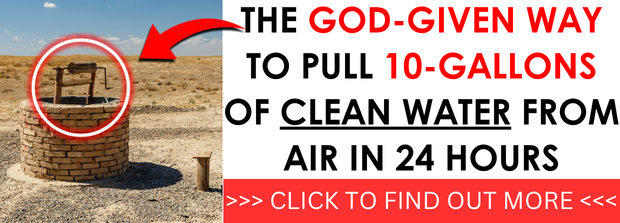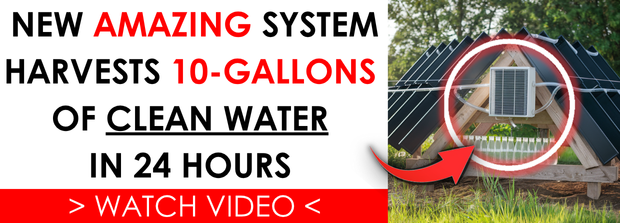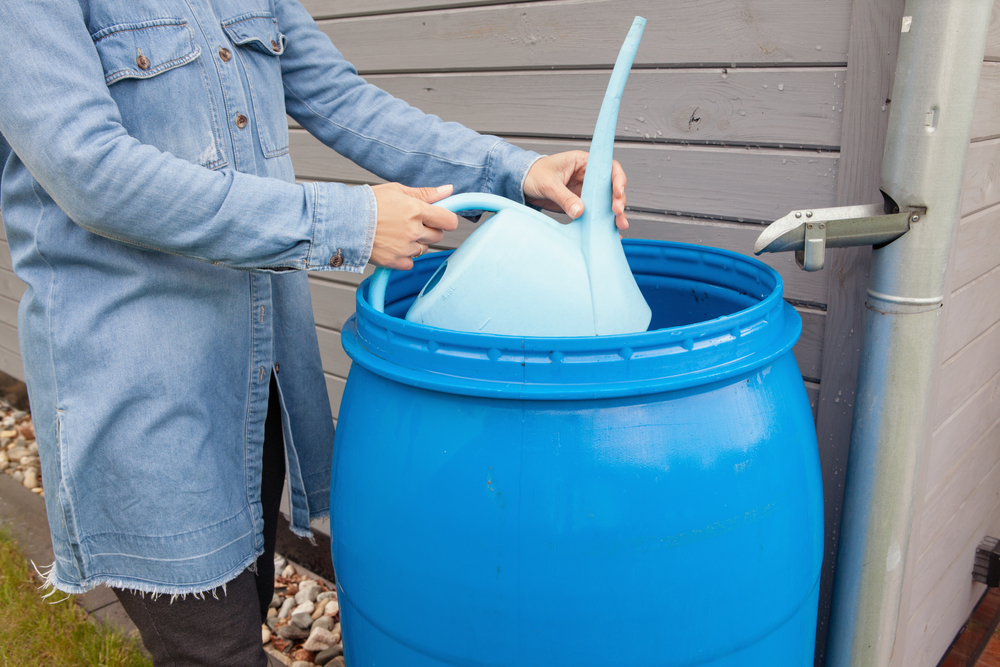You’ve got your beans, bullets, and band-aids squared away—but what about water? Sometimes, it’s easy to overlook because, let’s face it, turning on the tap and seeing it flow feels like magic. But when the grid goes down or disaster strikes, that magic disappears fast. And here’s the kicker: you can survive weeks without food, but only days without water.
So, how do you stash enough to keep you and yours safe when bugging in?
It’s not just about filling a few jugs and calling it good. There’s an art (and a science) to storing water properly—keeping it clean, accessible, and, most importantly, there when you need it.

Why Water Storage is Your #1 Prep (Yes, Even Over Food)
You ever notice how survival experts always say “water first”? There’s a reason for that. Dehydration doesn’t just make you thirsty—it messes with your head. Within hours, you’re sluggish. By day two, you’re making dumb decisions. And by day three? Hallucinations kick in.
Now, compare that to food. You can go weeks without eating and still function (not comfortably, but you’ll live). But water? Three days without it, and you’re in serious trouble.
The Math Doesn’t Lie (And Neither Will Your Thirst)
The rule of thumb is one gallon per person per day—but that’s the bare minimum. That covers drinking and a little for cooking. But what about:
- Hygiene? (Because nobody wants to be the stinky survivor.)
- Medical needs? (Wounds, fever, dehydration from stress.)
- Pets? (Fido’s gotta drink too.)
- Unexpected heatwaves? (No AC means you’ll be sweating more.)
Suddenly, that “one gallon” rule feels flimsy.
The Realistic Number You Should Aim For
If you’re prepping for a short-term crisis (power outage, storm), two weeks’ worth is smart. But if you’re thinking bigger—economic collapse, long-term grid failure—a month’s supply should be your goal.
Now, before you panic and start eyeing your bathtub as a makeshift reservoir, relax. You don’t need a swimming pool in your living room. With smart storage, you can tuck water into every spare corner of your home.
Where to Stash It
Most of us don’t live in a bunker with a dedicated water storage room. But that doesn’t mean you can’t stash enough H2O to keep your household going when the taps run dry. The key is working with the space you’ve got—not the space you wish you had.
Think Like a Squirrel
Squirrels don’t dump all their nuts in one hole. They scatter them—so if one stash gets raided or ruined, they’ve got backups. Your water storage should follow the same logic.
The Rule of Three:
- Multiple Locations – Don’t cluster everything in the basement.
- Different Containers – Mix barrels, jugs, and bottles for flexibility.
- Accessible but Hidden – Easy to grab in a crisis, but out of the way daily.
Storage Spots You Haven’t Considered
Most homes are full of wasted space that’s perfect for water storage – you just need to look at your surroundings with fresh eyes. Start by examining your furniture with a prepper’s perspective.
That space under your bed isn’t just for dust bunnies; it can accommodate several water containers without anyone noticing. Consider replacing ordinary ottomans and benches with storage versions – suddenly that living room furniture is secretly holding gallons of emergency water. Even bookshelves can become stealth reservoirs when you tuck water bottles behind rows of books, though you’ll want to leave yourself a subtle reminder so they don’t become forgotten relics.
Look closer at those awkward gaps and neglected corners throughout your home. The floor space in the back of closets, currently occupied by forgotten shoes and storage bins, can transform into a perfect spot for stacked 5-gallon jugs.
That frustrating gap behind your couch that collects lost remotes and crumbs? It’s actually prime real estate for a row of low-profile water bricks. Don’t overlook the dead zone under staircases either – what was once wasted space can accommodate several stacked barrels without disrupting your home’s flow.
Garages and basements offer their own unique opportunities if you get creative. Mounting sturdy metal shelving units gets your water containers up off concrete floors, which can degrade plastics over time. For lightweight water bags, consider installing ceiling hooks in rafters (assuming your structure can support the weight).
Even the slim gaps behind appliances like washers and dryers can be utilized for slim water containers. Just remember – if you’re storing water in an unheated garage through winter, proper insulation is crucial unless you want to deal with the mess of burst containers from frozen water.
A few critical warnings bear mentioning. However tempting it might be to stash water in that sunny corner, direct sunlight becomes an algae breeding ground – always opt for dark, cool locations. Be extremely cautious about storing water containers near gasoline, pesticides, or cleaning supplies; those fumes can permeate plastics and contaminate your water supply. And while stacking containers vertically saves space, an unstable tower of 55-gallon drums is just waiting to become an indoor flash flood – keep your stacks sensible and secure.
Containers: The Good, the Bad, and the Leaky
Not all water storage containers are created equal. That flimsy milk jug you rinsed out? It might get you through a weekend power outage, but for real preparedness, you need storage that won’t fail when you need it most.
Let’s break down the best (and worst) ways to stash your H2O—because nobody wants to discover their emergency water supply has turned into a science experiment.
Choosing the Right Water Storage Solutions
When building your water reserves, container selection makes all the difference between a reliable supply and a disappointing failure. For serious long-term storage, nothing beats food-grade 55-gallon plastic barrels. Their massive capacity and stackable design make them ideal for basements and garages, though their 400+ pound weight when full means you’ll need a pump or siphon for access. Pick the blue-colored barrels which are specifically designed for water storage – their UV-blocking properties outperform clear plastics.
For those with limited space, 3.5-gallon water bricks offer an excellent compromise. Their compact, stackable design fits perfectly in apartments, closets, or under beds, and at about 30 pounds when full, they remain manageable for most adults. The trade-off comes in higher cost per gallon compared to larger containers. Glass carboys present another interesting option for small-batch storage near sleeping areas. While they eliminate plastic taste and chemical leaching concerns, their weight and fragility make them impractical for large quantities or frequent movement.
Moving to medium-term solutions, 7-gallon Aqua-Tainers strike a practical balance with their sturdy construction, stackability, and convenient built-in spigots. Though still plastic, they’re perfect for garage or pantry storage and serve well as portable backups. Collapsible water containers shine in bug-out scenarios where space is premium – their ability to fold when empty makes them ideal for vehicle kits or camping, though their durability can’t match rigid containers.
When resources are tight, repurposed soda bottles (PET #1 plastic only) can serve in a pinch. Their lightweight, free nature makes them easy to stash throughout your living space, but remember they degrade over time and should be regularly replaced. Similarly, Mylar water bags work for odd spaces in bug-out bags, though their vulnerability to punctures limits their usefulness.
Some containers should be avoided entirely. Milk jugs deteriorate rapidly and become mold incubators. Never use containers that previously held non-food substances like detergent or juice – their residues can contaminate your water. Non-stainless metal containers invite rust, while unlined wooden barrels become bacterial breeding grounds.
Keeping It Clean
Let’s cut through the survivalist fantasies – in a real crisis, contaminated water won’t give you some dramatic heroic fever. It’ll have you curled up in the fetal position, praying for death as your body voids itself from both ends. The pioneers didn’t die from arrow wounds; they died from drinking bad water, and that same threat lurks in every improperly stored jug.
The Silent War Against Invisible Threats
That crystal-clear water in your storage containers? It’s a potential battlefield teeming with microscopic invaders. Bacteria like E. coli don’t care about your tactical gear or food stockpile. Viruses laugh at your bug-out location. Protozoa like Giardia are nature’s booby traps, waiting to turn your survival scenario into a biohazard zone. And let’s not forget your containers themselves – that plastic taste isn’t just unpleasant, it’s chemical leaching slowly poisoning your reserve.
The Three Pillars of Water Security
First comes prevention. Municipal tap water already comes treated, but if you’re sourcing from wells or springs, you need to play chemist before storage. A pre-filter gets rid of the visible gunk, but the real magic happens when you hit it with chlorine. Some folks balk at using bleach, but properly measured, it’s the difference between safe hydration and a gut-wrenching gamble.
Then there’s maintenance, the unglamorous backbone of preparedness. That water you carefully stored six months ago? It’s not getting better with age. Mark your calendar for rotation day – dump it, scrub the container, and start fresh. The exception being factory-sealed water, which can last years if you resist the urge to crack it open. Smart preppers plan their rotation to coincide with using the old supply for non-drinking purposes before replacement.
Finally, you need redundancy. Even with perfect storage, you want insurance. A Berkey filter standing by turns questionable water into something drinkable. The ancient art of boiling never goes out of style – one minute at a rolling boil kills nearly everything. And for those who love gadgets, UV purification pens offer high-tech solutions for small quantities.
When Your Water Turns Against You
You’ll know something’s wrong before you taste it. White flakes might just be minerals, but green slime means you’ve got an algae problem brewing. Black spots? That’s mold declaring squatter’s rights in your container. Your nose becomes your first line of defense – plastic taste can often be fixed by aerating between containers, but rotten egg smells signal hydrogen sulfide contamination. Chemical odors mean the container itself has failed, and everything inside is compromised.
Next-Level Water Security
For those who take their prepping seriously, there are advanced options. Silver ion treatment sounds like something from a sci-fi novel but has roots in ancient medicine. Ozonation equipment brings industrial-grade purification to your stockpile. And distillation, while energy-intensive, produces water so pure it’s almost clinical in its perfection.
But here’s the hard truth – all the gear in the world means nothing without discipline. Annual testing with simple strips keeps you honest about your water’s condition. Practice retrieving your water in the dark, because emergencies rarely happen in ideal conditions. Most importantly, make sure everyone in your household knows the drill – when seconds count, you can’t be the only one who remembers the purification protocols.
Because when everything goes sideways, that carefully stored water won’t just be your lifeline – it’ll be the difference between weathering the storm and becoming another cautionary tale about the importance of proper preparation. The pioneers learned this lesson the hard way. We have the luxury of learning from their mistakes.
A final word
You don’t have to build a water fortress overnight. Grab a few extra gallons on your next grocery run. Fill up those empty soda bottles (yes, they’re food-grade). Stick a barrel in the corner of your garage.
Because when things go south, the last thing you want is to be stuck with only one case of bottled water and a whole lot of regret.

Read the full article here




